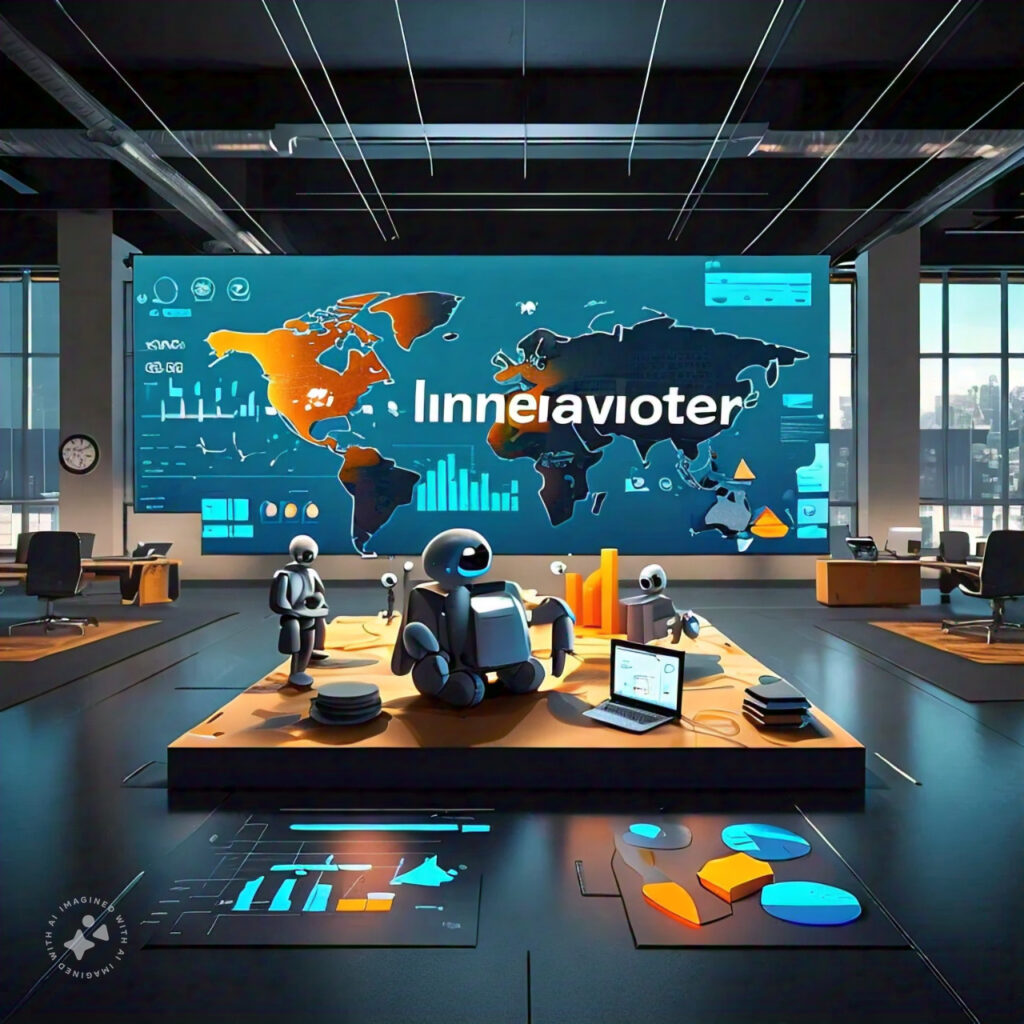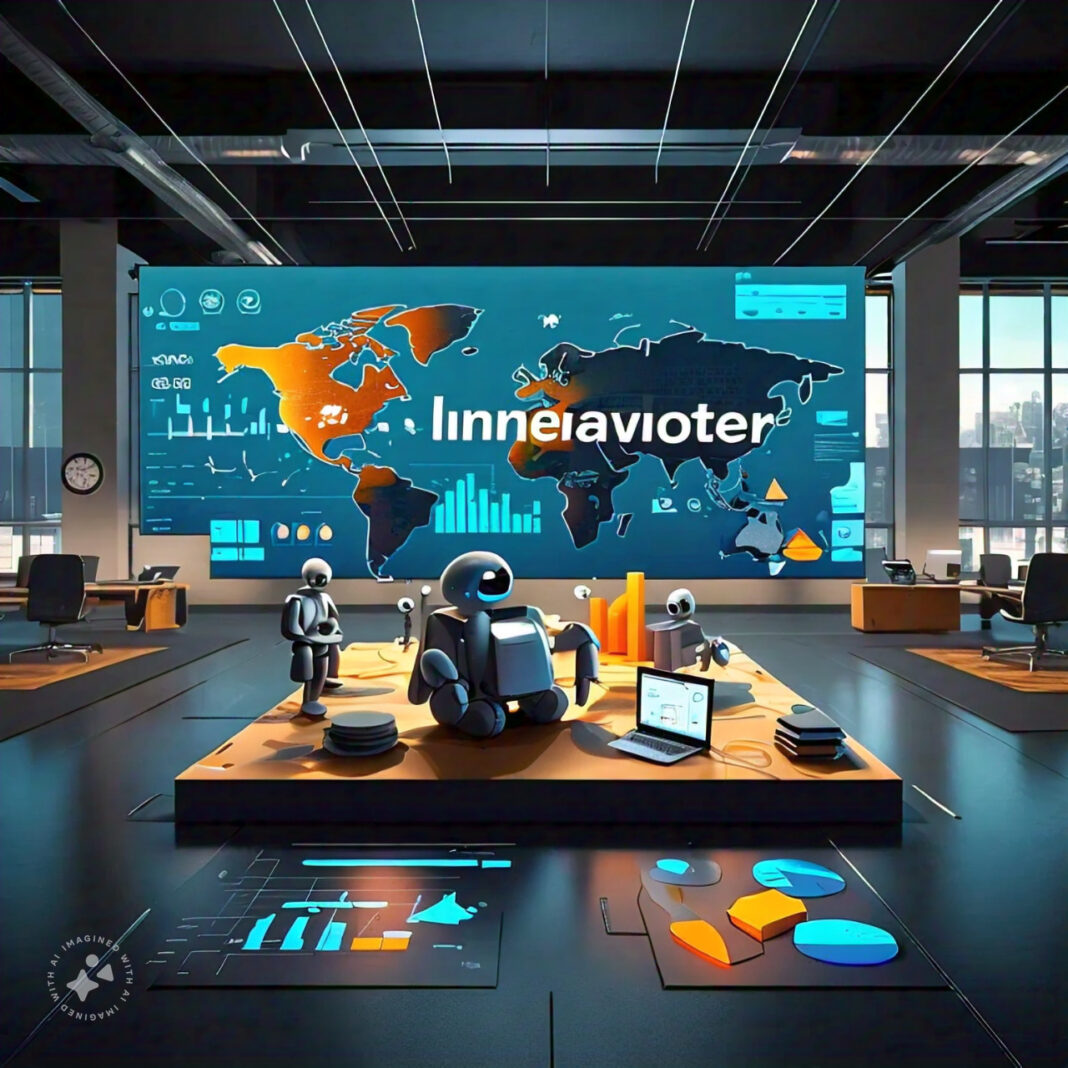In today’s dynamic and fast-changing business environment, one can often hear the term “disruptive innovation.” Coined in 1995 by Harvard Business School professor Clayton Christensen, disruptive innovation refers to a process by which a product or service initially takes root in simple applications at the bottom of a market and then relentlessly moves up the market, eventually displacing established competitors. Why, then, is this concept of such importance today?

It’s capable of reshaping entire industries, creating new markets, and changing quite fundamentally how we live and work. From the invention of the personal computer to creating and dominating streaming services, disruptive innovation has proven time after time its capacity to change our world.
In this article, we will consider some of the different reasons why disruptive innovation is needed and look into the impact on business, consumers, and society as a whole.
Here, we will see how this disruptive innovation creates economic growth, increases competition, and opens new opportunities to face many complex problems. Whether you’re a business leader, an entrepreneur, or just someone interested in the forces that shape our world, a journey through the concept of disruptive innovation will serve as an important primer for one of the most potent change agents of our time.
- For Economic Growth
One of the principal reasons disruptive innovation is important is in driving economic growth.
Creation of New Markets: Disruptive innovations often create new markets, thereby opening new sources of economic activity. For example, the rise of the smartphone created an application economy that runs into billions and never existed before.
Job Creation:
The establishment of new markets mostly gives way to the creation of new jobs. Through disruptive platforms, millions of people have been given flexible work opportunities worldwide, such as Uber and TaskRabbit providing opportunities in the gig economy.
Productivity Improvements:
Disruptive innovations generally yield productivity improvements. For example, cloud computing has enabled businesses to cut down on IT costs and enhance operational productivity.
By helping to continuously innovate new products, services, and business models, disruptive innovation acts like a spark that ignites economic growth, creates value and opens up many opportunities in almost all sectors of the economy.
- Encouraging Competition and Innovation
Disruptive innovation plays a significant role in ensuring good competition and continuous innovation.
Challenging Incumbents:
Disruptive innovations force established firms to innovate and improve their offerings. For instance, the entry by Netflix into the entertainment market made traditional cable companies innovate and stream their content themselves.
Lowering Friction for Entry into Business:
Many disruptive innovations bring down the barriers to entry in established markets. Cloud computing has eased entry for startups to launch and scale up operations without serious up-front IT investments.
Accelerating Innovation Cycles
The threat of disruption tends to accelerate the innovation cycles, as companies hurry to maintain their position ahead of potential disruptors. This faster rate of innovation benefits consumers and drives progress in all industries.
Besides, since disruptive innovation challenges the status quo and introduces new competitive dynamics, it prevents the creation of a market stagnation atmosphere and fosters continuous improvement and innovation.
- Improving Accessibility and Affordability
Disruptive innovation tends to make products and services available and affordable to more consumers.
Democratization of access: In many cases, disruptive innovations democratize access to products or services that earlier only a limited number could access. For example, online education platforms that have democratized access to high-quality learning resources across the globe cut across boundaries of geography and economic class.
Cost reduction:
Generally, disruptive innovations substantially reduce costs. A classic case of disruptive innovation is that of low-cost airlines. This makes flying possible and affordable for people who otherwise could never afford to do so.
Simplification: The disruptive product or service often means simplifying complex processes and, hence, making them available to larger groups. For instance, mobile banking applications have hugely simplified financial transactions and increased access to banking services among underserved populations.
Hence, in terms of societal impact, disruptive innovation has a huge potential to improve quality of life and social equity by making products and services more accessible and more affordable.
- Solving Complex Problems
One way in which the impact of disruptive innovation often comes across is in new solutions for complex problems in society and the environment.
Healthcare Developments:
Disruptive innovations in healthcare, including telemedicine and AI-driven diagnostics, would save lives and extend care efficiently and easily.
Environmental Solutions:
Many disruptive innovations solve environmental problems. Electric vehicles and renewable energy technologies are disrupting old energy and transportation sectors to arrest climate change.
Social Issues:
Disruptive innovations can also solve social problems. Microfinance platforms have disrupted traditional banking by integrating financial services among underserved people in developing countries.
By solving problems from totally new vantage points, disruptive innovation gives rise to breakthrough solutions that traditional approaches probably might have overlooked.
- Empowering Consumers
Usually, disruptive innovation shifts power from producers to consumers, hence improving products and services.
More Choices:
Typically, disruptive innovations increase consumer choice. For example, with the rise in e-commerce, consumers now get access to a wide array of products from around the world.
Personalization:
Many disruptive innovations in this space leverage data and technology to provide personalization. AI creates playlists, in the case of streaming services like Spotify, to enhance the user experience.
Consumer Empowerment:
Disruptive platforms often empower consumers by giving them more information and control. Review platforms like Yelp have disrupted traditional advertising by empowering consumers with a loud voice in shaping business reputations.
By putting more power in the hands of the consumer, it forces firms to be more responsive to the needs and preferences of consumers.
- Catalyzing Organizational Change
The threat or opportunity of disruptive innovation itself often catalyzes needed changes within organizations.
Cultural change:
The companies threatened by disruptive change often need a change in their organizational culture to become a more innovative and adaptive organization.
New Business Models: Very often, disruptive innovation forces a shift in the business models of companies. How IBM moved from being a hardware company to one that offers services and computing on the cloud is a sterling example of how companies can reinvent themselves against disruptive threats.
Skill Development: The need to respond to disruptive innovations forces companies to develop new skills and capabilities, leading to increased investment in the training and development of employees.
The forced adaptation and evolution of organizations brought about by disruptive innovation could be a key to more dynamic, resilient, and innovative companies.
- Fueling Technological Progress
Disruptive innovation is very closely related to technological progress and drives progress in many different areas.
Faster Tech Adoption: Normally, disruptive innovations speed up the diffusion of new technologies. For instance, the iPhone accelerated the diffusion of touchscreen technology and mobile internet.
Intersectoral Effect:
Technological disruptions in any field can quite often result in waves throughout other businesses. Innovations in artificial intelligence and machine learning, for instance, can change industries as diverse as health, financial services, or transport.
Research and Development: Such a view of disruptive innovation usually increases the investment made toward research and development in the pursuit of breakthrough technologies that can be useful to all of society.
Moreover, it may drive the process of technological advancement and shape our technological future by shifting the boundaries of what can be done.
- Transformation of Industries and Business Practices
The strength of disruptive innovation in industry and business practice transformation can be dramatic.
Industry Convergence: Via such disruptions, well-defined industries start to converge. In the case of the smartphone, computing, communication, and entertainment converged in one product.
New Business Practices:
There is a great potential to establish new business practices which often come with disruptive innovation. Originally from the world of disruptive technology startups, the lean startup methodology is now applied in companies within all types of industries.
Disruption of Value Chains:
Most disruptive innovations remake the value chains of industries. For instance, the e-commerce model of Amazon disrupted the traditional value chains in retailing by easily and directly connecting consumers with a large network of sellers.
It keeps the business world dynamic and responsive to rapidly changing technologies and consumer needs by reshaping industries and business practices.
- Encouraging Entrepreneurship
Disruptive innovation creates opportunities for entrepreneurs and startups to challenge established players.
New Venture Opportunities:
Many times, disruptive innovations give new venture opportunities. For example, with the advent of the sharing economy, several successful startups were created.
Leveling the Playing Field:
Many disruptive innovations democratize the playing field between startups and established companies. For example, cloud computing gives startups access to enterprise-level IT resources for a fraction of the traditional cost.
Attracting Investment
The potential for disruptive innovation often attracts venture capital and other kinds of investment that help to fuel the growth of innovative startups.
By creating opportunities for new entrants, it attracts investment in innovative ideas, hence developing a vibrant entrepreneurial ecosystem.
- Keeping up with the Changing Consumer Behavior
Most of the time, disruptive innovation comes as a means of catering to the changing behavior and preferences of consumers, helping keep one’s business relevant.
Matching Evolving Needs:
Disruptive innovations often better serve evolving customer needs, compared to the solution that exists at present. The rise of plant-based meat alternatives is an example of growing consumer interest in sustainable and ethical food.
Generational Shifts:
Most disruptive innovations serve the tastes of young generations. For example, social media platforms disrupt the concept of traditional communication and media consumption amongst young users.
Lifestyle Changes:
Many disruptive innovations are aligned with finer detail changes in lifestyles. For instance, growth in remote work technologies, catalyzed by the pandemic, reflects how disruptive innovation underpins and facilitates tectonic lifestyle shifts.
Keeping a pulse on changing consumer behaviors and preferences, disruptive innovation lets businesses stay relevant and responsive to customer needs.
Conclusion:
While it sounds really fascinating, disruptive innovation is much more than just a buzzword in business. From this post, we have learned that it is a powerful driver of economic growth, a promoter of competition, a solver of intricate problems, and a reshaper of entire industries.
The very fact that products and services are made more accessible and affordable to all is of prime importance in itself. It empowers consumers and stimulates entrepreneurship.
In the fast lane of today’s technology, the foundation of success is usually laid by the ability of any business to disrupt innovatively.
Those who have a vision or unharness of new disruptive innovations have a chance to succeed, while others are left behind, open to the risk of becoming irrelevant.
That fact underlines the importance of building an innovation culture and keeping an attitude that questions the status quo.
Though there can hardly be a denial of the role of disruptive innovation in economic progress, such progress should be refitted with more responsibility.
In addition to creating job displacement in traditional industries, such disruptive innovation gives rise to new regulatory and ethical questions and sometimes creates unintended consequences.
Managing disruptive innovation responsibly thus becomes a challenge for businesses and policymakers alike.
Looking ahead, the importance of disruptive innovation can only rise. Confronting increasingly complex global challenges—from climate change and healthcare accessibility to sustainable urbanization—disruptive innovation will be core to the solutions that will have to be found.
The message for businesses is clear: ride the wave of disruptive innovation or face obscurity. This does not mean waking up and moving after every new technology or trend.
It entails continuous learning and adaptability in your culture with an openness to challenging conventional wisdom. It means tracking consumer needs changes and new technologies that might crop up, and being willing to cannibalize your products or services if necessary to stay ahead of these disruptive trends.
Secondly, policymakers and education leaders at all levels must acknowledge that disruptive innovation sometimes needs the creation of environments that foster innovation and entrepreneurship.
This involves investing in education and research, making regulatory environments more innovation-friendly, with due regard for the protection of public interests, and developing safety nets that assist workers and industries affected by the more harmful consequences of disruptive change.
For individuals, recognition of the role of disruptive innovation can inform decisions about careers and personal development. Gifts of adaptability, continuous learning, and creative thinking only grow more valuable in a world in which disruptive change is the status quo.
To sum up, disruptive innovation is important because it is one of the major drivers of progress in our modern world today. It challenges us to think differently, creatively solve problems, and strive continuously for better solutions.
Though somewhat unsettling, disruptive, and at times disruptive in the near term, in the long term, it is what pushes us forward.
It creates new opportunities, betters the quality of life, and helps in fighting some of the serious challenges our globe is confronted with.
In many respects, looking ahead, and embracing and using the power of disruptive innovation will help to create a more prosperous, sustainable, and equitable world.






